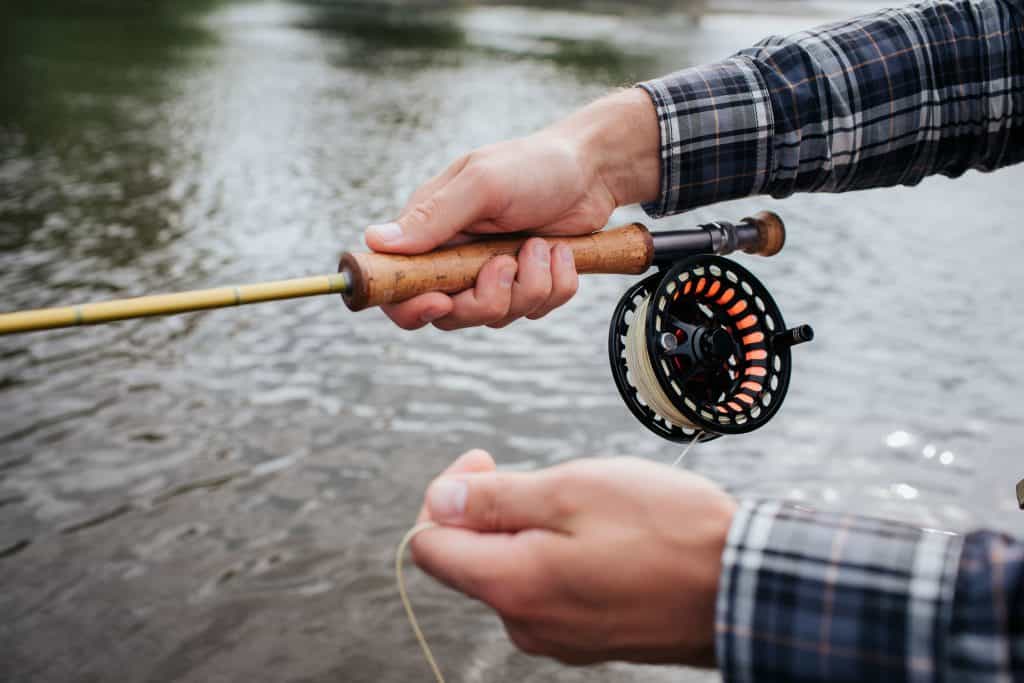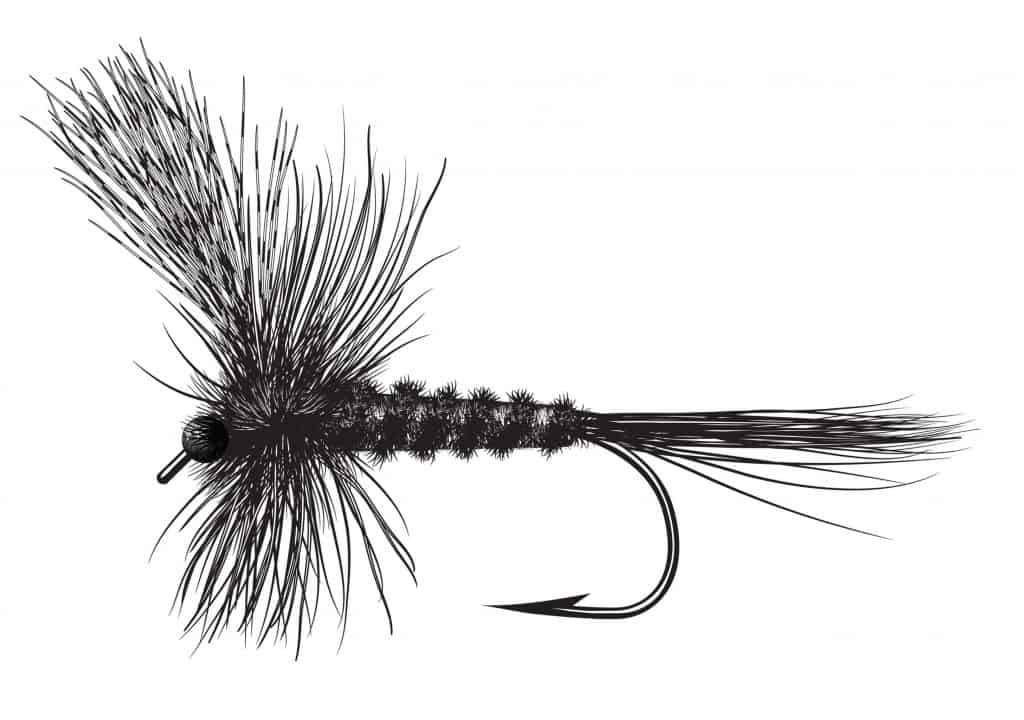
Leaders and tippets are two pieces of fishing equipment that can be a bit hard to differentiate between when you are new to fishing. It’s very important to use the correct materials and techniques to achieve the best outcome (and the most fish) when you’re fly fishing.
So, what is a fly fishing tippet? A fly fishing tippet is a thin line attached to the leader. Its purpose is to help the fly move more smoothly through the water to create a more realistic glide; imitating the appearance of an insect on the surface of the water. It is also small, meaning that it is harder for the fish to detect that there is a line above water.
As we explore the purpose and design of tippets, you will be able to better learn about each component of this piece of equipment and how it assists in fly fishing success.
The Tippet
The tippet is a specifically gauged and extremely thin line that is attached to the leader and the fly. This is usually the smallest part of the pole, coming in at around 2-4 feet.
The tippet is extremely flexible. This is what allows it to glide so much more smoothly on the choppy waters we fish. The purpose of the tippet is to extend the life of the leader.
When you don’t use a tippet, it is easy for your leader to become extremely worn, especially when it has to hold all of the weight of the fly, flying through the water on its own. When you tie a fly to the tippet instead of the leader it will save the taper of the line.
How Long Should My Tippet Be?
When you first purchase your line, your leader and tippet sections are going to already be connected. The tippet comes with the leader, so you can’t choose how long it’s going to be until you have to add more line after using it several times.
The length of your tippet makes a difference when you fish, and many fishermen choose to use a tippet that is about 2-4 feet long. If your leader is about 9 to 12 feet long, then your tippet should be about four feet. However, if your leader is 15 feet long, then your tippet should be five feet.
You’ll be using up the line on your tippet pretty quickly, so you should do a little bit of length compensation to ensure that you don’t have to change it too frequently.
What is the Connection Between a Leader and a Tippet?
Now that we’ve covered tippets, you might be wondering what a leader is. The leader is the portion of
This is also the line you need to draw the fish’s attention with. Because it is so far out in the water, the line is virtually non-existent to the human eye; it is made of nylon material.
Since it is made with nylon, the diameter of the line is significantly different on both ends. The thicker end of the line is toward the top, which adds strength to your cast as you fling it back and forth.
The thin tip of your leader is attached to the tippet. The difference in weight and size between the leader and the tippet is what creates such a good cast.
The taper is what allows the leader to shoot through the water more smoothly. The taper also allows it to land and rest on the surface of the water more gently. The tippet helps create that invisibility.
How Do I Set up My Leader and Tippet?
There are many ways you can set up your leader and tippet to get the best use out of it. Below is a video giving you step by step instructions for one way you can adequately tie them together.
It also teaches you how to attach the fly as well:
Attaching the leader to the tippet and the tippet to the fly is fairly simple, however, the line is quite small so it takes a bit of practice. You have to make sure that you have an adequate amount of line so your leader and tippet last longer.
Even though it seems like the type of knot you use makes no difference, if you do the wrong one you’re going to have a lot of trouble with tangled lines and money spent on
Different Colored Lines For Your Tippets and Leaders
Fly fishing lines come in a variety of colors, ranging from black to neon yellow- depending on your preference. The color of the line you pick will not affect the amount of fish that you catch or the amount of fish attracted to your pole.
The fishing line is just for your benefit. If you choose to purchase a black line but you can’t see it when you are fishing, then it really isn’t serving its purpose for you, now is it?
That is why it comes in such a variety of colors because everyone’s eyesight is different, so when we choose a different color of
If you are an avid fly fisherman, it may be a good idea for you to purchase multiple different colors of fly line. This is s
While a neon yellow line may work great during the night, it may not fly well (pun intended) when you can’t see the same line during the day, because the sun is causing it to blend in with the water.
As I stated earlier in this section, the fish will not be able to see the color of your line. All they will see is something black above the water. While most people will think that’s stupid because it doesn’t allow the fish to be attracted to the line, as long as you have a good leader, the fish will still come.
Tippet Attachment to the Fly

The fly is probably my favorite part of fly fishing. The fly goes on the end of the tippet and is what is used to catch the fish. It is supposed to look like a small fish or worm under the water, or an insect floating along the surface of the water, depending on the type of fly fishing that you are doing.
This is why I love shopping for flies. Before I even began to fly fish I would go into fly shops and buy the materials to make my own flies. At first I used these materials to make hair clips, but later on, my grandpa showed me how to make real fishing flies!
Dry fly fishing is a technique that involves making your fly/insect hop along the water to attract fish. The goal of this is to make the fish think that there are live insects on the water that it can eat. The transparent tippet end helps give the illusion that your fly is really an insect.
Related Questions
How much of a tippet do you use? The size of a tippet that you use should be determined by the size of a leader that you use. If you are using a 7.5-foot
How long should a leader in fly fishing be? Fly fishing leaders are typically 7.5 to 9 feet. The size of your leader should be determined by weather conditions and the type of fish you are trying to catch. If you are going for an aggressive fish try the 7.5 or if it’s a really bad weather day, try the 9 foot.
Is there only one type of fly? Flies come in all shapes in sizes; with an especially vast range in size. Different types of fishing use different types of flies; the same goes for the many different types of fish. One thing you want to take note of is that when you go into a store to purchase flies, you will be limited to what they have inside of the store.
